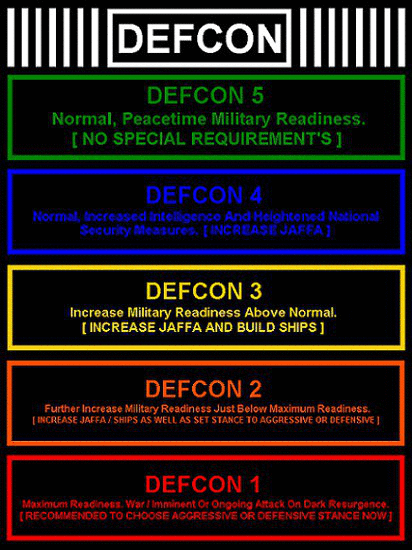

The development of a SRC framework would require cooperation among space actors, including governments, space agencies, and private companies. United States Armed Forces: Level of Military Readiness (DEFCON) On the other hand, if the space environment is relatively stable, the SRC level could be set to a lower level to indicate a more relaxed state of readiness. For example, if there is a high level of debris and potential for collisions, the SRC should be set to a higher level to indicate a heightened level of readiness for potential collision avoidance manoeuvres.

To determine the appropriate level of SRC, various factors should be considered, including the current state of space technology and infrastructure, the level of space debris and potential for collisions, and the potential for space-based conflicts or attacks. The SRC framework would enable the space community to effectively respond to space-based threats and mitigate the impact of potential disruptions to space activities.

The SRC would be a five-level scale, similar to DEFCON, with SRC 1 being the highest level of readiness and SRC 5 indicating the lowest (Moran, 2021). In the space context, a similar system to DEFCON, called the Space Readiness Condition (SRC), could be developed to indicate the level of readiness and preparedness for potential space threats. However, as space activities become increasingly vital to national security and economic interests, it is essential to consider the potential threats that could impact space operations and the level of readiness required to mitigate those threats. The DEFCON system has traditionally been used to indicate the level of military readiness of the United States Armed Forces, ranging from DEFCON 5 (normal readiness) to DEFCON 1 (maximum readiness) (US Department of Defense, 2006). Space Readiness Condition (SRC): An adaptation of The DEFCON System


 0 kommentar(er)
0 kommentar(er)
